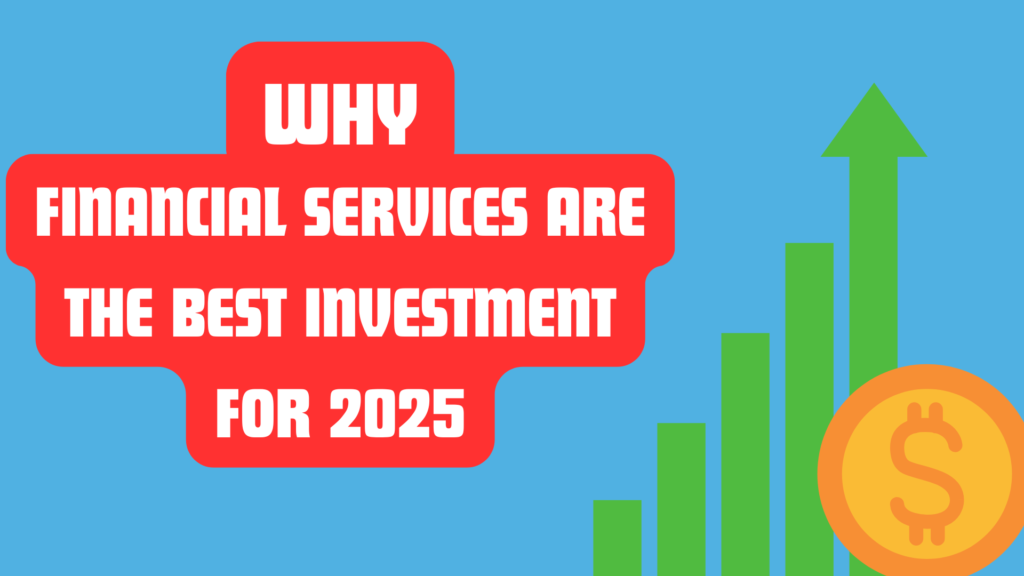

Why Financial Services Are the Best Investment for 2025?
In the ever-evolving landscape of the Indian economy, the financial services sector stands as a cornerstone of growth, innovation, and resilience. With India poised to become a $5 trillion economy in the near future, sectors like private sector banking, NBFCs (Non-Banking Financial Companies), and insurance are becoming increasingly attractive to investors. These segments offer a combination of profitability, innovation, and long-term stability, making them essential for anyone aiming to build a robust investment portfolio in 2025 and beyond.
Financial Services: The Lifeblood of a Growing Economy
The Indian financial ecosystem has witnessed rapid transformation in recent years, underpinned by digitization, financial inclusion, regulatory reforms, and rising consumer demand. As of 2025, the financial services sector contributes over 6% to the national GDP, and the banking, NBFC, and insurance segments together account for a substantial portion of stock market capitalization.
With increasing digital penetration, especially in tier-2 and tier-3 cities, a rising middle class, and tech-led innovations, the stage is perfectly set for a decade of accelerated growth in the financial services domain.
Also Read; How Investment in Renewable Energy & EVs, Powering the Futur
Private Sector Banks: The Digital Powerhouses
Private sector banks in India, such as HDFC Bank, ICICI Bank, Kotak Mahindra Bank, and Axis Bank, have consistently outperformed their public sector counterparts. Their strength lies not only in better asset quality and profitability but also in their tech-savvy approach, offering seamless customer experiences through mobile banking, digital wallets, and AI-powered services.
These banks have also shown remarkable agility in adapting to regulatory changes, expanding their loan books while maintaining a sharp focus on risk management. The growth of retail loans, especially home, personal, and auto loans, has further strengthened their revenue streams. With strong Return on Equity (ROE), stable Net Interest Margins (NIMs), and healthy CASA (Current and Savings Account) ratios, these banks continue to attract institutional and retail investors alike.
Furthermore, the digital banking revolution—enabled by UPI, API banking, and fintech collaboration—has made private sector banks a future-ready investment. According to analysts, the sector is expected to grow at a CAGR of 12–14% till 2030, making it one of the most compelling opportunities in the financial space.
NBFCs: Unlocking Credit Access to the Last Mile
The NBFC sector has emerged as a dynamic and indispensable part of India’s credit ecosystem. Companies such as Bajaj Finance, Cholamandalam Investment, Tata Capital, and Muthoot Finance have carved a niche by catering to underserved customer segments—from small businesses and gig workers to rural borrowers and gold loan customers.
NBFCs are admired for their faster loan processing, customer-centric products, and customized risk assessment models, which allow them to serve high-risk and unbanked populations more effectively than traditional banks. In 2025, NBFCs have further increased their dominance in vehicle finance, consumer durable loans, and MSME lending—thanks to growing consumption demand and fintech integration.
However, the sector is not without its challenges. Regulatory scrutiny, liquidity mismatches, and credit risk remain key concerns, especially among smaller players. Yet, well-capitalized and diversified NBFCs continue to thrive and are expected to grow at 15–17% CAGR over the next five years. Investors focusing on companies with strong governance, tech adoption, and sustainable business models will likely benefit from long-term compounding returns.
Insurance Sector: The Sleeping Giant Awakens. Why Financial Services Are the Best Investment for 2025?
Despite being a trillion-dollar economy, India’s insurance penetration remains abysmally low compared to global averages. But that’s exactly where the opportunity lies. With life insurance penetration at less than 4% of GDP, and general insurance even lower, the sector is poised for multi-decade exponential growth.
Life insurers like HDFC Life, SBI Life, and ICICI Prudential are expanding their reach with innovative, customer-friendly policies and AI-driven underwriting. Meanwhile, general insurers such as ICICI Lombard and Star Health are leveraging InsurTech to offer customized health, motor, and travel insurance with real-time claims settlement. Digital aggregators like Policybazaar have further simplified access to policies, increasing awareness and reach.
Moreover, the IRDAI’s progressive reforms, including allowing 100% FDI in insurance intermediaries and simplifying product approval processes, are drawing both domestic and global capital into the sector. With a growing young population, increasing awareness, and pandemic-induced health consciousness, insurance is no longer seen as a tax-saving tool but as a critical risk-mitigation asset. The sector is expected to grow at 18% CAGR, making it a must-have component in any diversified financial portfolio.
Future Outlook: A Decade of Unparalleled Opportunity; Why Financial Services Are the Best Investment for 2025?
The future of India’s financial services sector is bright, dynamic, and filled with possibilities. As technology continues to reshape how credit is disbursed, savings are managed, and risk is insured, companies that embrace innovation will outperform those that resist change.
Between 2025 and 2030, India is expected to witness: Why Financial Services Are the Best Investment for 2025?
- A 3x increase in retail credit demand
- Massive fintech adoption across banking, NBFC, and insurance services
- A surge in insurance premium collections due to higher financial awareness
- Accelerated growth in tier-2/3 markets through digital financial literacy
- Increased foreign institutional investment (FII) in financial services
Investors should closely monitor tech adoption, regulatory developments, and ESG performance of financial companies to make informed investment decisions. Diversification across banking, lending, and insurance segments ensures reduced volatility while capturing sector-wide upside.
Also Read; शून्य निवेश; बिजनेस आइडिया और निष्पादन रणनीति रणनीति
Conclusion; Why Financial Services Are the Best Investment for 2025?
In a world where volatility is the only constant, India’s financial services sector offers a rare blend of stability, scalability, and profitability. Whether it’s the digital-first private banks, the fast-growing NBFCs, or the underpenetrated insurance players, each vertical holds immense promise for long-term investors.
As the Indian economy continues to formalize and digitize, investing in financial services is no longer optional—it’s a strategic imperative. With the right due diligence, selection, and time horizon, financial stocks can be the cornerstone of your wealth creation journey.
Disclaimer; This article is intended for informational purposes only and should not be considered financial advice. Please consult with a certified investment advisor before making investment decisions.



